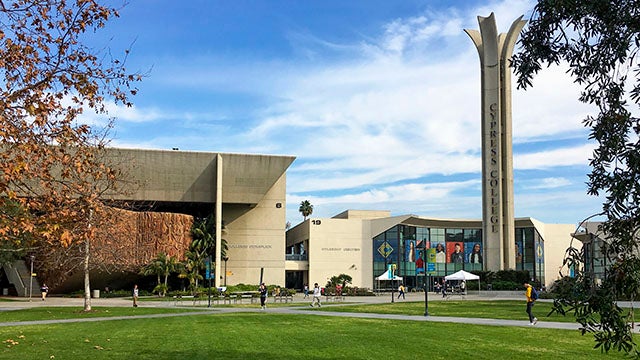When students come to community college, they’re looking for more than a college degree. They’re looking to improve their lives through a career path that will lead to a good job and allow them and their families to thrive.
This week, the Aspen Institute College Excellence Program honored two community colleges leading the way in making sure students succeed in college and beyond. Amarillo College in Texas and Imperial Valley College in California were both named winners of the 2023 Aspen Prize for their exemplary work during a time of extraordinary challenge. The two colleges will split a $1 million award.
The Aspen Prize is always a cause for celebration, but this year feels different. A decade-long decline in community college enrollment accelerated dramatically in the pandemic. Shifting labor markets and rising wages mean individuals without a college credential can earn up to $20 an hour in some cities, pulling away students. Add to that skepticism about the value of college and increasing efforts to politicize what colleges teach, and many institutions are struggling to deliver on their missions.
At a time of such turbulence, the accomplishments of this year’s two Aspen Prize winners are especially remarkable. These colleges don’t just talk about the promise and value of a college degree—they deliver. And in their successes, they offer lessons on what’s possible.
This year’s Aspen Prize winners are different in many ways. One is in a blue state, the other red; one is more transfer-oriented, while the other delivers more workforce credentials. But what they have in common is a singular focus on making sure every student succeeds.
Delivering Credentials of Value
Research shows that the top reason students enroll in college is to get a good job and advance a career. Community college offers two paths to that: a workforce credential that provides the skills needed to secure a good job immediately, or an associate degree that prepares students to transfer and attain a job-ready bachelor’s degree.
Imperial Valley College is located in a rural area with some of California’s lowest rates of college degree attainment. Imperial Valley leaders, faculty, and staff have been working shoulder-to-shoulder with K-12 and four-year partners to expand access to—and success in—valuable bachelor’s degrees. Why? Because college leaders know most people in their region need bachelor’s degrees to advance into promising career fields, and the community needs graduates to build a bright future for the valley.
Advisors work with high schoolers to choose dual enrollment courses with clear paths to associate degrees that pave the way to bachelor’s degrees, and those, in turn, lead to good (and needed) jobs in the region. The results: Transfer rates are steadily increasing, and over half of Imperial Valley students who transfer complete bachelor’s degrees within six years, well above the national average.
In Texas, Amarillo College has shown impressive success by focusing on delivering what its students and region need. The college has developed exceptional workforce degree programs in many fields that provide strong job opportunity in its region, from agriculture to nursing. But leaders understand that not every student can wait two years to earn an associate degree—let alone four years to earn a bachelor’s—before earning enough wages to support themselves. So, the college has established a campus that prepares students—via 10-week sprints—for jobs in cybersecurity and other technical fields. The impact: Amarillo students, on average, earn over $41,000 the year after graduation, 37% more than other new hires in the region.
Developing Cultures of Care
Leaders at both Imperial Valley and Amarillo understand that many students—including disproportionate numbers of Black, Hispanic, and low-income students—never complete a credential because of personal and academic challenges. Neither college uses that as an excuse. Instead, the culture on both campuses is for everyone to do everything in their power to help every student succeed.
Amarillo set an ambitious goal of removing at least one poverty-based barrier for every student. Students have access to a food pantry, emergency aid, mobile WiFi access, and a childcare resource center with diapers and formula. The college also provides robust—and often required—academic tutoring. Data show these investments make a huge difference in completion.
Imperial Valley also offers significant student support, including tiny houses for former foster youth. More impressive is how they changed the way they set their course schedule. As at many colleges, Imperial Valley used to set the course schedule based on faculty needs and classroom capacity. When college leaders realized too many classes were not offered at times or frequencies students needed, they shifted. Now, the college works with faculty to schedule classes that students need—when they need them.
These reforms have produced exceptional results for the students at Amarillo and Imperial Valley, including some of the nation’s fastest-improving completion rates. Over the past four years, the three-year graduation and transfer rate has increased 8 percentage points at Amarillo and 12 percentage points at Imperial Valley.
As we celebrate these exceptional colleges, it’s important to remember that these achievements are not numbers on a spreadsheet. They represent the activation of the talents of thousands more diverse students. These colleges demonstrate that even in hard times, with focused effort and vision, it is possible for America’s community colleges to deliver on the promise to lift up all of their students and entire communities.


